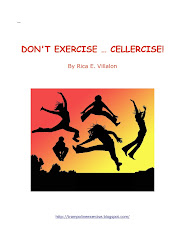Home senior care includes physical rehabilitation as part and parcel of its program. Studies show that it is safe for most adults over 70 years old to exercise.
Home senior care is even recommended for patients with chronic illnesses such as heart disease, high blood pressure, diabetes, and arthritis. Many of their physical ailments can be addressed and treated with exercise.
Home senior care should, of course, be undertaken with the guidance and supervision of a doctor. If you are not sure if the particular exercise is safe for you, or if you are currently inactive, it always helps to ask your doctor.
There are four essential forms of exercise that those in a home senior care program can get into: aerobics, isometrics, isotonic and calisthenics.
Aerobic exercise is exercise that improves the body’s oxygen consumption. It strengthens the cardiovascular, pulmonary, lymphatic, muscular and metabolic systems.
Isometric exercise involves the contraction of a muscle without joint movement. This is excellent for strength training and rehabilitation of those receiving home senior care.
Isotonic exercise, on the other hand, involves contraction of a muscle to produce a range of movements. This form of exercise strengthens the skeletal muscles.
Calisthenic exercise may consist of a variety of simple movements for those under home senior care. These are usually performed without weights. They increase body strength and flexibility using the weight of one's own body for resistance. Repeated motions of calisthenics done over an extended period of time are great for building muscle endurance.
Rebounding is probably the safest and most convenient exercise that the elderly or disabled can incorporate into their home senior care program. It includes all the exercise forms described above. It is the one exercise that can be done with a single fitness machine in just 10 minutes a day.
Furthermore, rebounding enables the body to rid itself of bacteria, virus and other harmful wastes by stimulating the cells and increasing the circulation of body fluids to them.
If you are not already physically active under home senior care, then begin slowly. Should a 10-minute session be too tiring for you, you can always split your routine into two segments of 5 minutes each; one in the morning and another one in the evening.
The baby bounce or the light jog is a good starting point for a home senior care exercise program. Starting slowly makes it less likely that you will injure yourself. It also helps prevent soreness from "overdoing" it.
The saying "no pain, no gain" is not true for older or elderly adults. You do not have to perform high intensity exercise to get most health benefits.
The key to exercising regularly is to have a positive attitude towards it. Pick an activity you can have fun with in your home senior care regimen and focus on making the experience as pleasant as possible.
For example, my 89-year old mother has been using David Hall’s Cellerciser® for 9 months now. It took her only 3 days to recover from a recent bout with pneumonia. Instead of taking her illness lying down, she bounced! Today, she continues to be mobile, healthy and spirited.
Research has conclusively demonstrated that physical activity is linked to increased longevity. It is for this reason that exercise is an integral part of home senior care.
Trampoline Exercise with David Hall's Cellerciser is great for people of all ages ... children, adults and even the elderly or handicapped. Safely and effectively - in just 10 minutes a day - it tones and strengthens all body parts, promotes weight and inch loss, heals pain and injury, boosts the immune system and much much more.
JOIN MY CELLERCISE CIRCLE

Fill in your name and e-mail address and get my new book FREE ------ "Don't Exercise...Cellercise"
About Me

- Rica E. Villalon
- Makati City, Philippines
- Exclusive Distributor for the Cellerciser in the Philippines Mobile: +63917 8397839 Email: rica@villalon.com
David Hall's Cellercise Video
Rebound Books
Followers
Cellercise Philippines
OnlyWire
Square Trampolines
Blog Archive
-
►
2010
(1)
- ► 02/28 - 03/07 (1)
-
▼
2009
(22)
- ► 07/12 - 07/19 (1)
- ► 06/21 - 06/28 (1)
- ► 06/07 - 06/14 (1)
- ► 05/31 - 06/07 (1)
- ► 05/03 - 05/10 (1)
- ► 04/19 - 04/26 (1)
- ► 03/15 - 03/22 (1)
- ► 02/08 - 02/15 (2)
- ▼ 02/01 - 02/08 (7)
- ► 01/25 - 02/01 (6)


No comments:
Post a Comment